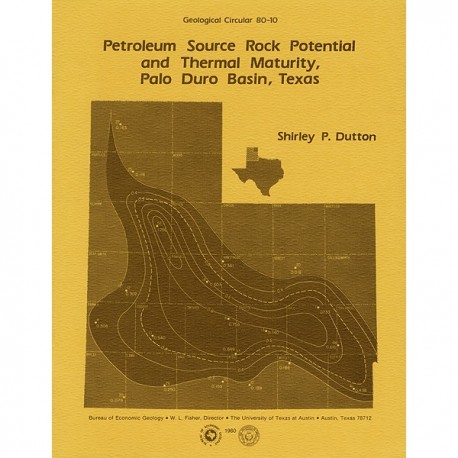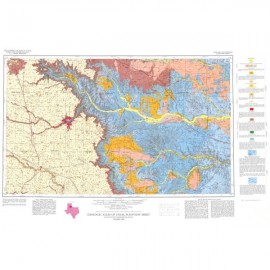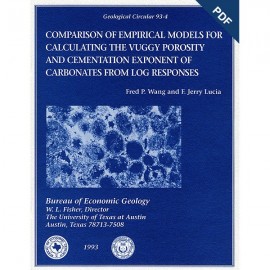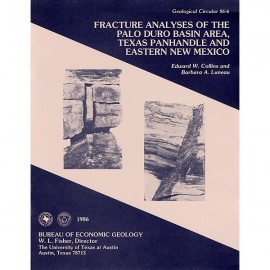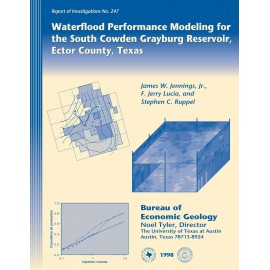Geological Circulars
-
Books & Reports
- Reports of Investigations
- Guidebooks
- Udden Series
- Geological Circulars
- Down To Earth
- Atlases of Major Oil and Gas Reservoirs
- Texas Memorial Museum Publications
- Environmental Geologic Atlas of the Texas Coastal Zone
- Mineral Resource Circulars
- Other Reports
- Seminars and Workshops
- Handbooks
- Submerged Lands of Texas
- Symposia
- Annual Reports
- Open File Reports
-
Maps & Cross Sections
- Thematic Maps
- Miscellaneous Maps, Charts & Sections
- Geologic Atlas of Texas
- STATEMAP Project Maps
- Geologic Quadrangle Maps
- Cross Sections
- Highway Geology Map
- Energy and Mineral Resource Maps
- Shoreline Change and Other Posters
- Wilcox Group, East Texas, Geological / Hydrological Folios
- Bouguer Gravity Atlas of Texas
- River Basin Regional Studies
- Featured Maps
- Posters
- Teachers & the Public
-
Geological Society Publications
- Gulf Coast Association of Geological Societies
- Alabama Geological Society
- Austin Geological Society
- Corpus Christi Geological Society
- Houston Geological Society
- Lafayette Geological Society
- Mississippi Geological Society
- New Orleans Geological Society
- South Texas Geological Society
- GCS SEPM Publications
- Historic BEG & UT Series
Petroleum Source Rock Potential and Thermal Maturity, Palo Duro Basin, Texas
GC8010
A free, digital version of this publication can be found on: Texas ScholarWorks
GC8010. Petroleum Source Rock Potential and Thermal Maturity, Palo Duro Basin, Texas, by S. P. Dutton. 48 p., 18 figs., 4 tables, 1980. ISSN: 0082-3309. Print.
To purchase this publication as a PDF download, please order GC8010D.
ABSTRACT
Samples collected from 20 geographically widespread wells in the sparsely drilled Palo Duro Basin were analyzed for total organic carbon content (TOC). Highest values of TOC, up to 6.9 percent, occur in Upper Permian San Andres dolomite in the southern part of the basin. Pennsylvanian and Lower Permian (Wolfcampian) basinal shales contain up to 2.4 percent TOC and are fair to very good source rocks. Kerogen color and vitrinite reflectance, which indicate maximum paleotemperatures, were analyzed in all samples containing greater than 0.5 percent TOC. Pennsylvanian and Wolfcampian kerogen is yellow orange to orange, an indication that temperatures were sufficiently high to begin to generate hydrocarbons from lipid-rich organic material. Palo Duro Basin samples have a broad range of vitrinite reflectance values, but populations with the lowest reflectance probably indicate the true temperatures that were reached in the basin. Average reflectance in representative Pennsylvanian vitrinite is 0.52 percent; in Wolfcampian samples the average reflectance is 0.48 percent. These values are consistent with kerogen color and suggest that basinal source rocks may have begun to generate hydrocarbons.
Keywords: hydrocarbons, Palo Duro Basin, Pennsylvanian, San Andres Formation, source rocks, TOC, Texas, Wolfcampian
Citation
Dutton, S. P., 1980, Petroleum Source Rock Potential and Thermal Maturity, Palo Duro Basin, Texas: The University of Texas at Austin, Bureau of Economic Geology Geological Circular 80-10, 48 p.
